
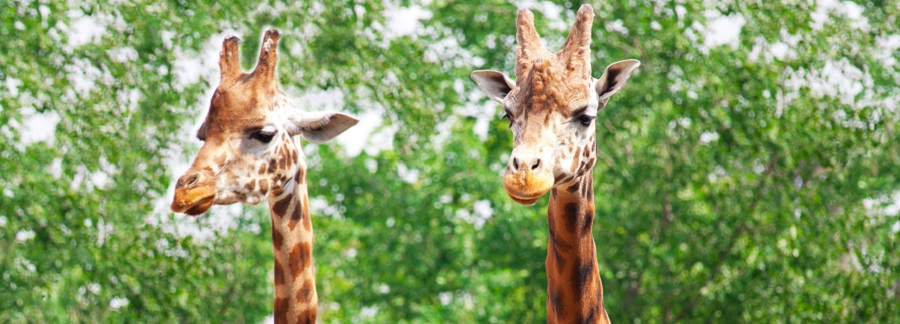
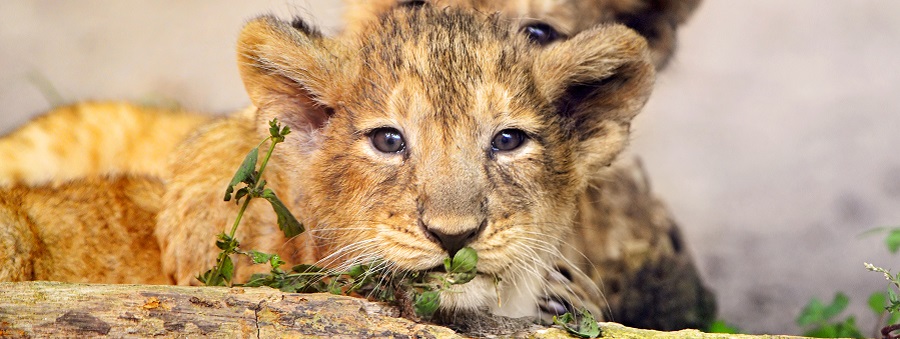
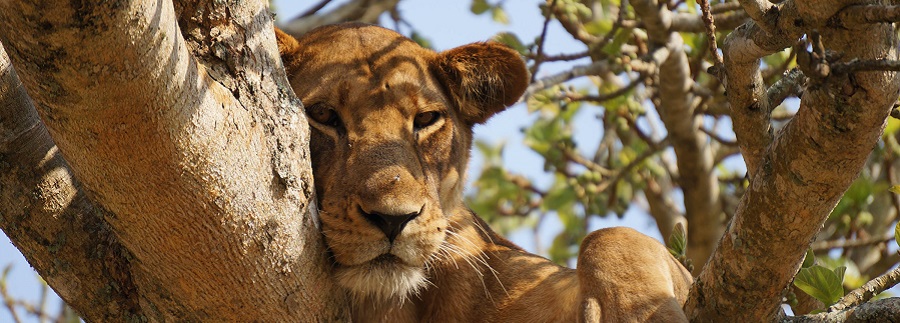
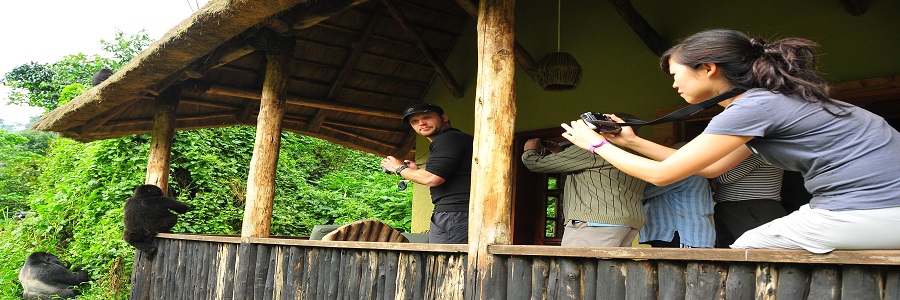

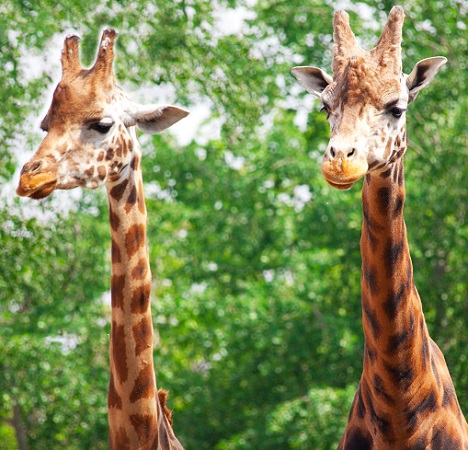
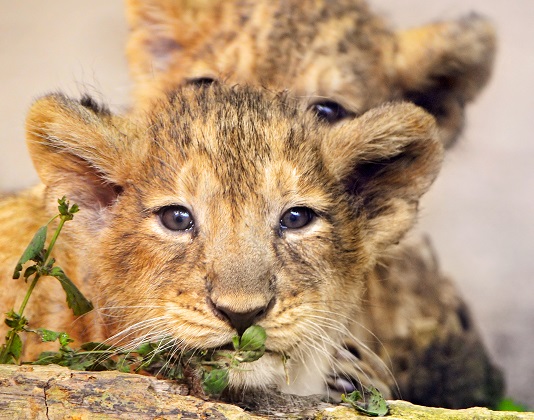
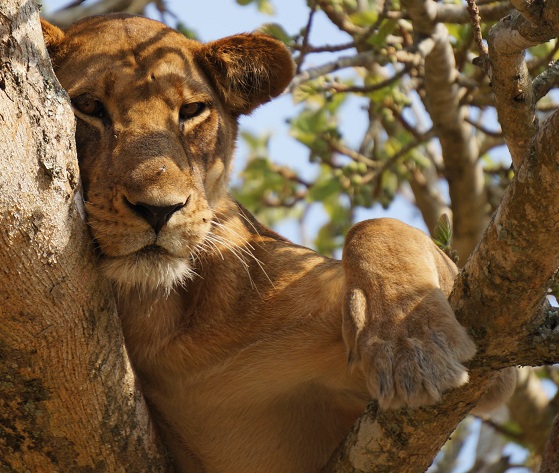
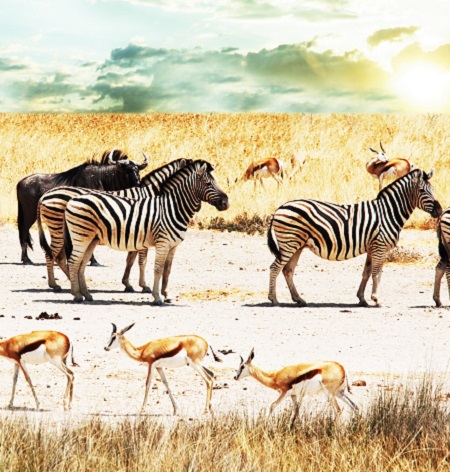
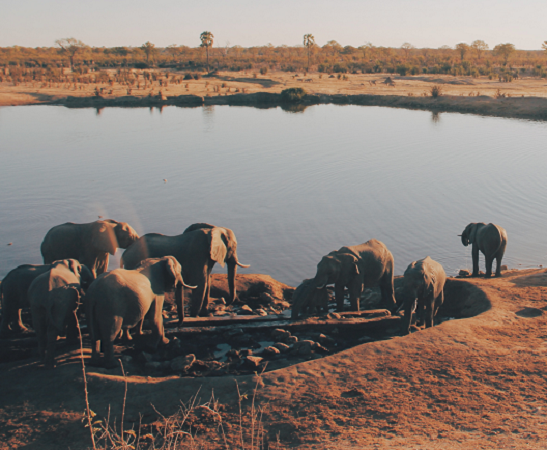
Optie één
Deze 3-daagse camping safari biedt u de kans om een grote verscheidenheid aan dieren in het wild te zien tussen enkele van de meest gevarieerde landschappen. Je bezoekt niet alleen het Tarangire en Lake Manyara National Park, maar ook de Ngorongoro Crater, die op de werelderfgoedlijst van UNESCO staat. Je zult enorme kuddes olifanten zien, in het seizoen vlokken van flamingo's en troepen van bavianen.
Vandaag vertrekken we vroeg, halen u op bij uw hotel in Arusha en rijden zuidwaarts naar het prachtige Tarangire National Park. Tegen de middag arriveren we op uw camping, op tijd voor een gezellige lunch. Uw gamedrive in de middag zal alle wonderen van Tarangire onthullen, een nationaal park dat vaak wordt aangeduid als de ‘Elephant Playground’. In het park worden soms kuddes tot 300 van deze machtige zoogdieren gezien. Serengeti is misschien bekender, maar Tarangire kan in het droge seizoen gemakkelijk wedijveren met de dichtheid van dieren. Evenals de kuddes olifanten is Tarangire de thuisbasis van buffels, leeuwen, gnoes, zebra's en gazellen, terwijl gerenoek en oryx met franjes ‘lokale specialiteiten’ zijn. De moerassige oevers van het meer van Burungi zijn de lokaas voor deze zoogdieren en de wateren trekken ook veel prachtige vogelsoorten aan. Pas op voor gigantische ijsvogels, hop en de heerlijk genaamde witbuikige go-away vogel. Tarangire staat bekend om zijn prachtige baobabbomen, glooiende savanne en acaciabossen.
Na ons ontbijt op de camping halen we de picknicklunchbox op en verlaten we het kamp naar Lake Manyara National Park. Lake Manyara is terecht beroemd om zijn in bomen klimmende leeuwen, maar ze zijn verre van het enige hoogtepunt: aan het einde van een opwindende middag had je gemakkelijk olifanten, nijlpaarden, gnoes, buffels en giraffen kunnen zien, plus vele andere soorten. Roze flamingo's, een van de 400 vogelsoorten die hier zijn geregistreerd, zorgen voor een vleugje kleur. Aan het eind van de middag is het weer terug naar uw camping voor wat ontspanning en een heerlijk diner.
Na het ontbijt gaat uw safari verder naar de Ngorongoro-krater, een UNESCO-werelderfgoed. Dit is 's werelds grootste caldera, een kenmerk dat is ontstaan door het instorten van land na een vulkaanuitbarsting. Het is ongeveer 18 km in diameter en de thuisbasis van ongeveer 25.000 zoogdieren. In dit relatief kleine gebied kun je bijna alle zoogdieren van Oost-Afrika vinden, variërend van de gazellen van Grant en Thomson tot rietbokken in de bossen op de hellingen. U kunt ook gevlekte hyena's, zeldzame wilde honden en enkele van de meer dan 500 vogelsoorten in het gebied zien. Het is ook mogelijk om de Big Five - leeuw, olifant, buffel, neushoorn en luipaard - te zien in de paar uur die je
in de krater doorbrengt. Na de lunch op een picknickplaats is er meer tijd om uw gamedrive voort te zetten voordat u de krater verlaat en tegen het begin van de avond terugkeert naar Arusha.
OVER ONZE SAFARI-VOERTUIGEN

Optie twee
Deze driedaagse tour naar het Tarangire National Park, Lake Manyara en Ngorongoro Crater in Tanzania biedt in korte tijd een reeks opmerkelijke ervaringen. Tijdens het Safari-vliegbezoek kun je een van Afrika's zeven natuurlijke wonderen verkennen - de Ngorongoro-krater en het Tarangire National Park met een groot aantal soorten vegetatie en dieren. Tarangire staat bekend om hun eindeloze savannevlaktes en hun enorme kuddes olifanten. Je maakt kennis met de beruchte big five en verwondert je over het uitgestrekte landschap van de krater in Ngorongoro.
We verzamelen je vroeg in de ochtend op weg naar het betoverende - en vaak over het hoofd geziene - Arusha National Park. Arusha is een juweel van Tanzania, met een verscheidenheid aan planten- en dierenleven waardoor je je adem inhoudt. Je zult de oevers van het rustige Lake Momella verkennen, dat de kleuren van de lucht weerspiegelt in haar stille wateren, en je zult de levendigheid ervaren van de gebronsde bush waar de Ngurduto Crater-buffels, waterbokken, giraffen, wrattenzwijnen, zebra's en gazellen zich bezighouden . Deze zijn het hele jaar door aanwezig, dus je zult zeker overal een divers dier zien. De ongrijpbare luipaarden en olifanten zijn meestal verlegen in Arusha, maar er is ook een goede kans om ze te spotten. Je krijgt ook de kans om te voet op pad te gaan voor een fascinerende wandeling - het is een totaal andere sensatie om de levendige hartslag van Afrika door de zolen van je schoenen te voelen. In een langzamer tempo kun je Afrika echt gaan begrijpen. Je maakt kennis met de flora en fauna, maar je blijft veilig, vergezeld door een gewapende ranger die je door weelderig bos naar de heldere bronnen van een sprankelende waterval zal leiden. De rangers van Arusha National Park zijn zeer erkentelijk, en terwijl je slentert, leer je zoveel over de biodiversiteit van het park - en meteen zie je een stam zwart-witte colobus-apen, beroemd in het park vanwege hun acrobatiek. Je bent dan terug in Arusha Hoofdaccommodatie Accommodaties: Het hangt af van uw selectie Budget, Middenklasse & Luxe hotel. Maaltijden: Water is inbegrepen bij alle maaltijden (andere drankjes zijn niet inbegrepen)
Bij het aanbreken van de dag vertrekken we naar Tarangire National Park. Wanneer we in Tarangire aankomen, beginnen we met het verkennen van de gigantische termietenheuvels en de eeuwenoude baobabbomen. Dit park staat bekend om zijn gevarieerde vogelsoorten en enorme populatie olifanten. Er zijn regelmatig meedogenloze leeuwen, giraffen, wrattenzwijnen, struisvogels, impala's, cheeta's, mangoesten, buffels en ondeugende bavianen. Nadat we de dieren in Tarangire hebben gezien, vervolgen we onze reis naar ons volgende hoogtepunt, de Ngorongoro-krater en dicht bij Lake Manyara. Diner en overnachting. Hoofdaccommodatie Accommodaties: Afhankelijk van uw selectie Budget, Middenklasse & Luxe hotel. Maaltijden: Water wordt gecombineerd in alle maaltijden (andere drankjes zijn niet inbegrepen)
Na het ontbijt wordt u vanuit Arusha naar Lake Manyara gereden. Lake Manyara National Park, genesteld aan de voet van de helling van de Great Rift Valley, biedt een schilderachtig, afwisselend landschap. We gaan picknicken in het prachtige park. Diverse habitats, vergezeld van regenwouden, het Sodameer en de savanne ondersteunen het zeer diverse ecosysteem. Met meer dan vierhonderd vogelsoorten, waarvan sommige trekvogels, is het reservaat een genot voor vogelspotters. Lake Manyara herbergt de legendarische boomklimmende leeuwen, maar ook buffels, olifanten, giraffen, impala's en nijlpaarden. In de late namiddag zullen we terug zijn in Arusha.
OVER ONZE SAFARIVOERTUIGEN
Het is eigendom van Africa Natural Tours & Safaris Company Limited
Wilt u GEEN kilometerstand of brandstoflimieten
Hoge onderhoudsnormen, we hebben een eigen onderhoudswerkplaats.
Onze beide Safari Cars zijn Nieuw
Al onze auto's zijn 4x4 met uitzetdaken
Al onze auto's hebben koeler
Al onze safariauto's hebben oplaadpoorten voor camera's.
De meeste van onze auto's zijn voorzien van airconditioning
Wij zorgen voor Water tijdens Safari.

Vervoer (4x4 Land Cruiser) met open dak
Parkkosten
18% btw op tourkosten en diensten die bijna 55% van de totale kosten kosten.
Budget/ Medium/ Luxe Accommodaties
Professionele Engelssprekende safarigids & chef
ontbijt; lunches; avondeten
1,5 fles water per dag; thee en koffie bij de maaltijden
Zowel Nationale als Internationale vluchten
Ziektekostenverzekering
Visumkosten die $ 50 zijn, behalve voor Canadese en Amerikaanse paspoorthouders, die $ 100 zijn
Tip Safari gids & kok
Persoonlijke spullen
Optie drie
Deze driedaagse safari-optie is een geweldige manier om in korte tijd enkele van de verbazingwekkende dieren in het wild in Tanzania te ervaren. Deze compacte safari is ideaal voor diegenen die een strak schema hebben of die op zoek zijn naar een weekendje weg.
Een bezoek aan de nationale parken Tarangire en Lake Manyara, evenals de Ngorongoro-krater, biedt de beste ervaring om dieren in het wild te bekijken gedurende deze drie dagen.
De concentratie van dieren in het wild in deze drie parken biedt geweldige mogelijkheden om in korte tijd veel dieren in het wild te zien.
Je wordt om 07.00 uur opgehaald bij je hotel in Moshi/Arusha en overgebracht naar het Tarangire National Park om je gameview-ervaring te beginnen in dit prachtige park dat beroemd is om zijn grote verzameling baobabbomen, spectaculaire grote zoogdierpopulatie en verscheidenheid aan vogelsoorten, om nog maar te zwijgen van een van de grootste concentraties olifanten in het land.
Na uw rondleiding door het park, wordt u naar uw tentenkamp gebracht waar u de nacht zult doorbrengen.
Maaltijden: Lunch & Diner inbegrepen
Je verlaat het kamp rond 06:00 uur en gaat naar de Ngorongoro Crater voor je laatste gamedrive. De krater is niet alleen de grootste ononderbroken caldera ter wereld, maar het is ook een van de nieuwe 7 natuurlijke wonderen van Afrika. Na je ochtend gamedrive, heb je een pauze om te genieten van je lunchpakket op de Hippo Pool Picnic-site.
Na de lunch wordt u teruggebracht naar Mto wa Mbu waar u overnacht in Camp of Lodge waar u zult dineren.
Je verlaat het kamp rond 5 uur 's ochtends en gaat naar Lake Eyasi om te gaan jagen met de Hadzabe Bosjesmannen, een van de laatste jager-verzamelaarsgemeenschappen ter wereld. Na de ochtendjacht bezoekt u de Datoga-stam, bekwame ambachtslieden en smeden. Na je geweldige culturele ervaring, word je 's middags teruggebracht naar Moshi/Arusha/Airport via curiosawinkels waar je wat souvenirs kunt kopen om mee naar huis te nemen.
OVER ONZE SAFARIVOERTUIGEN
Het is eigendom van Africa Natural Tours & Safaris Company Limited
Wilt u GEEN kilometerstand of brandstoflimieten?
Hoge onderhoudsnormen, we hebben onze eigen onderhoudswerkplaats.
Onze beide Safari Cars zijn Nieuw
Al onze auto's zijn 4x4 met uitzetdaken
Al onze auto's hebben een koelkast
Al onze safariauto's hebben oplaadpoorten voor camera's.
De meeste van onze auto's zijn voorzien van airconditioning
Wij zorgen voor water tijdens Safari.

Vervoer (4x4 Land Cruiser) met open dak
Parkkosten
18% btw op tourkosten en diensten die bijna 55% van de totale kosten kosten.
Budget / Medium / Luxe Accommodaties
Professionele Engelssprekende safarigids & chef-kok
ontbijt; lunches; avondeten
1,5 fles water per dag; thee en koffie bij de maaltijden
Zowel Nationale als Internationale vluchten
Medische verzekering
Visa kost $ 50, behalve voor Canadese en Amerikaanse paspoorthouders, die $ 100 zijn
Voorwerpen van persoonlijke aard
Wasservice
Alcoholische dranken
Extra activiteiten (Ballonvlucht $600 per persoon & Masai Village $25 per persoon)
Optie vier
Wij zijn de Tanzania Safari-tour met uitstekende recensies ...
We bieden onze klant ook een redelijke prijs
We verlaten Arusha vroeg in de ochtend en reizen naar het Serengeti Country Wide Park. We reizen naar Serengeti in een straat dicht bij de rand van de Ngorongoro-krater, waarbij we onderweg rekening houden met waarnemingen van dieren. De gouden savanne en eindeloze vlaktes, vol met zebra's, gnoes en giraffen, maken het gemakkelijk te herkennen waarom de Serengeti een van de zeven natuurlijke wonderen van Afrika is. Op deze dag kunnen we genieten van een picknicklunch op het Naabai kopje (een kleine, rotsachtige heuvel in een vaak vlakke omgeving), waar je de gelegenheid hebt om de beroemde paarskophagedissen van de Serengeti te zien. Na de lunch gaan we verder de vlaktes in voor een ontspannen recreatiedruk. Je overnacht in de Serengeti.
We kunnen onze dag beginnen met een vroege ochtendrit in de kritische Serengeti. De savanne is een actief landschap en de lucht wordt overspoeld met de melodieën die de vogels creëren omdat het geregenereerde daglicht het volledige landschap begint te verlichten. Je handleiding zal de afdrukken op de vloer bekijken om roofdieren te achtervolgen. We reizen naar het Ngorongoro Conservation. U wordt voorzien van diner en overnachting
Na een vroeg ontbijt kunnen we ons haasten naar Ngorongoro Crater, aangezien dit verreweg de beste tijd is om dieren te spotten. Op deze dag kunnen we genieten van een recreatiedruk rond de krater en een picknicklunch voorkomen bij een meertje in het park. Het meer is de thuisbasis van veel nijlpaarden en trekvogels, dus gasten zullen zeker genieten van het gaan! Vanwege de dierenassociatie die in de krater is gecreëerd, is er een buitensporige kans om elk lid van The enorme 5 te herkennen. De instelling bevat een aantal van de machtigste dieren in Afrika - de woeste leeuw, de grote olifant, de sluipende luipaard, de aanvallende neushoorn en de machtige waterbuffel. Ngorongoro Crater is duidelijk een prachtige plek. Wist je dat het meer dan miljoenen jaren geleden is gevormd? Een enorme vulkaan barstte uit, waardoor de vulkaan instortte, maar liet een wonderbaarlijk ongebroken krater achter, bekend als een caldera. Binnen de opmerkelijke krater kun je erop rekenen om de speelse zebra's, logge nijlpaarden, snelle gnoes en kakelende hyena's te zien. Evenzo zijn er zwermen slanke flamingo's langs het Soda-meer, terwijl hongerige haviken en gieren door de lucht cirkelen op zoek naar hun volgende maaltijd van afgedankt karkas. Mooie ooievaars, ibis en kraanvogels zijn beroemde watervogels in de krater, een bezienswaardigheid die je niet over het hoofd mag zien. Na een leuke middag vol dieren spotten, kunnen we vroeg of laat beginnen aan onze reis lager terug naar Arusha.
OVER ONZE SAFARIVOERTUIGEN
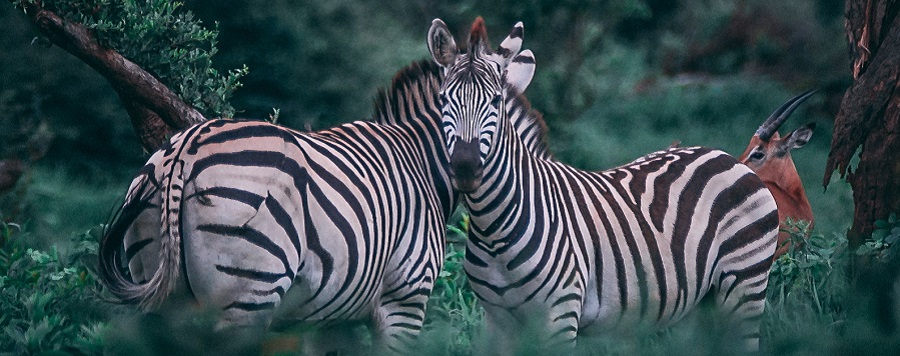
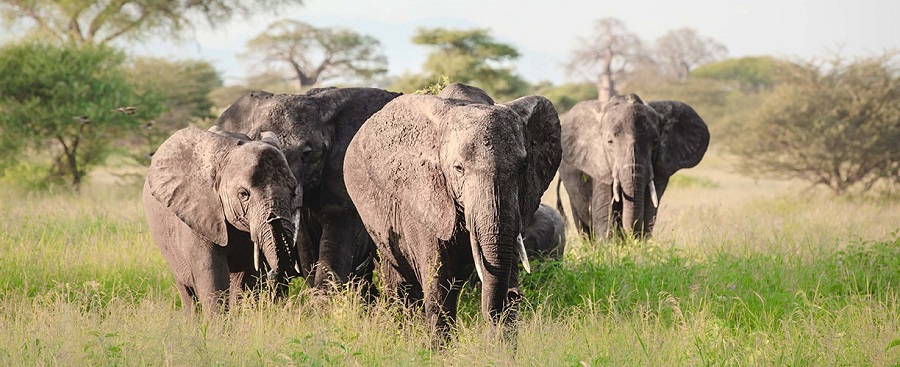
3 days safari Tarangire, Lake Manyara and Ngorongoro, 3 days safari Serengeti and Ngorongoro, 3 days Serengeti safari, 3 days safari Serengeti , 3 days Serengeti migration safari, 3 days private safari Tarangire, Lake Manyara and Ngorongoro,3 days private safari Serengeti and Ngorongoro, 3 days Serengeti private safari, 3 days private safari Serengeti , 3 days Serengeti migration private safari, 3 days sharing safari Tarangire, Lake Manyara and Ngorongoro, 3 days sharing safari Serengeti and Ngorongoro, 3 days Serengeti sharing safari, 3 days sharing safari Serengeti , 3 days Serengeti migration sharing safari, 3 days joining safari Tarangire, Lake Manyara and Ngorongoro, 3 days joining safari Serengeti and Ngorongoro, 3 days Serengeti joining safari, 3 days joining safari Serengeti , 3 days Serengeti migration joining safari, 3 days budget safari Tarangire, Lake Manyara and Ngorongoro,3 days budget safari Serengeti and Ngorongoro, 3 days Serengeti budget safari, 3 days budget safari Serengeti , 3 days Serengeti migration budget safari, 3 days luxury safari Tarangire, Lake Manyara and Ngorongoro, 3 days luxury safari Serengeti and Ngorongoro, 3 days Serengeti luxury safari, 3 days luxury safari Serengeti , 3 days Serengeti migration luxury safari, 3 days lodge safari Tarangire, Lake Manyara and Ngorongoro, 3 days lodge safari Serengeti and Ngorongoro, 3 days Serengeti lodge safari, 3 days lodge safari Serengeti , 3 days Serengeti migration lodge safari, 3 days camping safari Tarangire, Lake Manyara and Ngorongoro, 3 days camping safari Serengeti and Ngorongoro, 3 days Serengeti camping safari, 3 days camping safari Serengeti , 3 days Serengeti migration camping safari, , 3 days safari itinerary package cost price Tarangire, Lake Manyara and Ngorongoro, 3 days safari itinerary package cost price Serengeti and Ngorongoro, 3 days Serengeti safari itinerary package cost price , 3 days safari itinerary package cost price Serengeti , 3 days Serengeti migration safari itinerary package cost price , 3 days safari itinerary package cost price from arusha from moshi in arusha in moshi travel tour agency agencies operator operators company companies organizer organizers Tarangire, Lake Manyara and Ngorongoro, 3 days safari itinerary package cost price from arusha from moshi in arusha in moshi travel tour agency agencies operator operators company companies organizer organizers Serengeti and Ngorongoro, 3 days Serengeti safari itinerary package cost price from arusha from moshi in arusha in moshi travel tour agency agencies operator operators company companies organizer organizers, 3 days safari itinerary package cost price from arusha from moshi in arusha in moshi travel tour agency agencies operator operators company companies organizer organizers Serengeti , 3 days Serengeti migration safari itinerary package cost price from arusha from moshi in arusha in moshi travel tour agency agencies operator operators company companies organizer organizers.
In the shadow o the escarpment of the Great Rift Valley, Lake Manyara is best used as a soft introduction to a East Africa safari. While the scenic beauty of this park certainly makes it worth a visit, the game viewing here pales into insignificance when compared with that on offer in Tarangire, the Ngorongoro and the Serengeti. Famous for its tree-climbing lions, flamingos, breath-taking scenery and the soda-ash lake in the centre, Manyara merits a day trip but not much longer.
Lake Manyara is a lovely scenic park on the road from Arusha to the Ngorongoro Crater, famous for its tree climbing lions, great birdlife, good elephants and baboons. The lake itself takes up much of the park, leaving a strip of land running along its shores where game concentrates.
Often visited for an afternoon game drive on the way to Ngorongoro, it would be a shame to miss out Manyara if you're driving straight past it - but it's really not up there with the heavyweight big boys in terms of game viewing. However, if you're going on to Ngorongoro and Serengeti, you'll see plenty of game there anyway...
Lake Manyara National Park: The Wildlife
The concentrations of game here is not nearly as high as in surrounding parks, but there are a number of unique species that give reason enough to safari here. The park's main attraction are Lake Manyara's famous tree climbing lions - why these lions habitually climb trees is still up for debate, but viewing a pride relaxing in an acacia tree is a remarkable sight! The park is also famous for its elephant and huge number of baboons, and its varied landscape supports an impressive range of other game including wildebeest, buffalo, hippo, flamingo, zebra, warthog, waterbuck, giraffe, dik-dik and impala. The birding here is also very good, especially raptors.
How many flamingos are there on Lake Manyara?
Depending on when you go, flamingos flock on Lake Manyara in their thousands. It is impossible to predict as they flit between here and other East African lakes. You could see one, or you could see 10,000... It really is down to the luck of the draw.
Lake Manyara - When to go
According to the regional migration pattern, Manyara's official peak season is from July to October. However for such a small park this should not be a deciding factor; if you are in the area and have time, Lake Manyara is consistently good as a soft game viewing park at any time of the year. Lake Manyara is a great way to start your Tanzania safari and we recommend visiting on your Northern Tanzania circuit whilst on your way to the Ngorongoro Crater.
Lake Manyara - The activities
The main activity for visitor is day time game driving, although the park has recently started to offer night safaris and the camps deep inside the park offer short walks. Staying in the Rift Valley outside the park however does open up a wealth of possibilities, with activities such as walking, village trips, hiking and mountain biking available at some lodges.
Lake Manyara accommodation - Lodges and hotels near Lake Manyara
The most famous lodge at Manyara is &Beyond's luxurious Lake Manyara Tree Lodge, which offers the only accommodation actually inside the park.
Nestled on the top of the Rift Valley with superb views looking down into the park are the much more affordable Kirurumu Tented Camp and Lake Manyara Serena Lodge.
We also use lodges in the nearby Karatu area, the best of which are Plantation Lodge and Gibbs Farm, both allowing equally convenient access to Lake Manyara and the Ngorongoro Crater.
Lake Manyara - Further Reading
While we try and make our website as comprehensive as possible, if you would like some more background information, have a read through the Cadogan Guide to Tanzania and Zanzibar - Lake Manyara Chapter, written by one of our director’s Annabel. The most recent edition was published in 2005 so some of it might be slightly dated but generally it’s as comprehensive as they come. Also see our post about Tanzania's first treetop walkway which can be found withing Lake Manyara Park..
In the shadow o the escarpment of the Great Rift Valley, Lake Manyara is best used as a soft introduction to a East Africa safari. While the scenic beauty of this park certainly makes it worth a visit, the game viewing here pales into insignificance when compared with that on offer in Tarangire, the Ngorongoro and the Serengeti. Famous for its tree-climbing lions, flamingos, breath-taking scenery and the soda-ash lake in the centre, Manyara merits a day trip but not much longer.
Lake Manyara is a lovely scenic park on the road from Arusha to the Ngorongoro Crater, famous for its tree climbing lions, great birdlife, good elephants and baboons. The lake itself takes up much of the park, leaving a strip of land running along its shores where game concentrates.
Often visited for an afternoon game drive on the way to Ngorongoro, it would be a shame to miss out Manyara if you're driving straight past it - but it's really not up there with the heavyweight big boys in terms of game viewing. However, if you're going on to Ngorongoro and Serengeti, you'll see plenty of game there anyway...
Lake Manyara National Park: The Wildlife
The concentrations of game here is not nearly as high as in surrounding parks, but there are a number of unique species that give reason enough to safari here. The park's main attraction are Lake Manyara's famous tree climbing lions - why these lions habitually climb trees is still up for debate, but viewing a pride relaxing in an acacia tree is a remarkable sight! The park is also famous for its elephant and huge number of baboons, and its varied landscape supports an impressive range of other game including wildebeest, buffalo, hippo, flamingo, zebra, warthog, waterbuck, giraffe, dik-dik and impala. The birding here is also very good, especially raptors.
How many flamingos are there on Lake Manyara?
Depending on when you go, flamingos flock on Lake Manyara in their thousands. It is impossible to predict as they flit between here and other East African lakes. You could see one, or you could see 10,000... It really is down to the luck of the draw.
Lake Manyara - When to go
According to the regional migration pattern, Manyara's official peak season is from July to October. However for such a small park this should not be a deciding factor; if you are in the area and have time, Lake Manyara is consistently good as a soft game viewing park at any time of the year. Lake Manyara is a great way to start your Tanzania safari and we recommend visiting on your Northern Tanzania circuit whilst on your way to the Ngorongoro Crater.
Lake Manyara - The activities
The main activity for visitor is day time game driving, although the park has recently started to offer night safaris and the camps deep inside the park offer short walks. Staying in the Rift Valley outside the park however does open up a wealth of possibilities, with activities such as walking, village trips, hiking and mountain biking available at some lodges.
Lake Manyara accommodation - Lodges and hotels near Lake Manyara
The most famous lodge at Manyara is &Beyond's luxurious Lake Manyara Tree Lodge, which offers the only accommodation actually inside the park.
Nestled on the top of the Rift Valley with superb views looking down into the park are the much more affordable Kirurumu Tented Camp and Lake Manyara Serena Lodge.
We also use lodges in the nearby Karatu area, the best of which are Plantation Lodge and Gibbs Farm, both allowing equally convenient access to Lake Manyara and the Ngorongoro Crater.
We don't just know Tanzania!
For more information on Tanzania, the best thing to do is to give us a ring for an impartial chat. Although we love Tanzania, we also love the rest of Africa too and have experts in all the main safari countries. If you are undecided as to where to visit, please do just drop us an email or give us a call!
The Northern Circuit Encounter
Our three day Northern Circuit Encounter is a memorable experience of Northern Tanzania’s abundance of wildlife and spectacular scenery. Dubbed ‘Africa’s Garden of Eden’, The Ngorongoro Crater hosts an abundance of wildlife including the exceptionally rare black rhino and it is renowned for maximum game spotting. Exploring the vast plains of savannah in Tarangire National Park and tranquil game drives along the shallow waters of Lake Manyara will leave you feeling enchanted and revitalised.
TOUR ITINERARY
Day One: Moshi/Arusha/airport to Tarangire National Park
We will depart from Moshi/Arusha/airport in the early hours of the day and drive to Tarangire National Park where colossal termite mounds and ancient baobab trees await us. This park is renowned for their immense elephant population, their picturesque scenery and diverse bird life. Tarangire has an enticing wildlife that includes elephants, lions, giraffe, warthogs, ostriches, impalas, cheetah, mongoose, buffaloes and baboons. When our game drive comes to an end we will proceed to the Ngorongoro Crater rim campsite where we will witness the glorious sunset.
Day Two: Ngorongoro Crater
We will have a timely start to the day to ensure that we arrive at the Ngorongoro Crater promptly – early morning game drives provide you with an excellent opportunity to spot wildlife. We will enjoy a wonderful game drive with an appetising picnic lunch inside the crater. The elevated structure encourages the animals to settle inside the crater which means you are capable of spotting every member of ‘The Big 5’ in one day. The big five tend to dominate the savannah and consist of buffalo, lions, elephants, rhinos and leopards. The Ngorongoro Crater developed its structure nearly three million years ago when a colossal volcano erupted, making it the largest un-flooded, unbroken caldera in the world. You can also expect to encounter zebra, hippo, wildebeest and hyenas. You will find the flamingos gracefully lounging around the Soda Lake and the vultures are always corroding the discarded prey of a predator. Other birds include storks and geese. Your guide will be in close contact with the other safari drivers and his impressive ability to track down hidden animals will assure that you have an eventful day. We will have dinner and spend the night at the Fanaka Campsite. Comprehensive camping facilities are on offer.
Day Three: Lake Manyara to Moshi
In the morning we will depart to Lake Manyara where we will spend the day and enjoy a delectable picnic lunch. The park is nestled at the base of the rusty gold Great Rift Valley escarpment and the scenic landscape is breathtakingly magnificent. An abundance of species are able to reside in the park due to the wide range of habitats. The park record consists of over 380 species of birds, some of which are migratory, making it the ideal location for bird watchers. Thousands of pink-hued flamingos occupy the margin of the lake, other large water birds include pelicans, storks and cormorants. The wildlife you can expect to see are buffalo, elephants, giraffe, impalas and the ferocious hippos that inhabit the water. Our trip will come to an end in the late afternoon. We will proceed to Moshi but transportation to the airport can be arranged on request.
This 3-day lodge safari offers you the chance to see a wide variety of wildlife amongst some of the most diversified landscapes. Not only will you visit the Tarangire and Lake Manyara National Park but also the Ngorongoro Crater, a UNESCO World Heritage Site. You will see huge herds of elephants, in season flocks of flamingos and troops of baboons.
We have arranged packages taking you to Tanzania covering the most popular packs such as Serengeti, Ngorongoro, Lake Manyara, Tarangire National Park provided by the best tour operators in Tanzania.
Serengeti National Park is a famous national park found in northwestern Tanzania, it’s one of the oldest national park in this country. The park is famous for the annual migration of over 250000 zebras, crocodiles, honey badger as well as 1.5 million white bearded wildebeest. Serengeti National Park was made a reserve in 1921 and was established in 1951. The park covers an area of over 14,750 square kilometers of savannah, riverine forest, grassland plains as well as woodlands. It has got many animal species including; 2500 lions, 1000 leopards, African Bush elephants, African buffalos, eastern black Rhinoceros, Thomson’s and grant’s gazelles, wildebeest, topis, water bucks, eland, striped hyenas, spotted hyenas, baboon, eastern African wild dog, impalas, as well as masai giraffes, the park has over 500 bird species including; vultures, love birds, martial eagles, crowned cranes, Marabou storks, Kori bastards, ostriches as well as the secretary bird.
Have breakfast at your lodge or hotel in Arusha, and after start your transfer to Serengeti National Park at 7:00am. It’s approximately 335 km from Arusha town. This is also known as a world heritage site and it’s the oldest of the national parks. It’s mainly known for the annual wildebeests, 200000 zebras as well as 300,000 Thomson’s gazelle which migrate within the months of May, June, July, October, November and December. Upon your arrival at the park, you will check in at your lodge and proceed for a walking safari within the park.
Day 2: Have Full day game viewing in the park
Enjoy a game drive early in the morning to view all the nocturnal animals that are returning from hunting and the lions awaking in the dawn, again during the game drive, you will view many other animals on this Tanzania safari including; buffaloes, elephants, giraffes, topi, eland, Zebras, Kongoni, Lions, Solitary Leopards, Impalas, Hyenas, cheetahs, serval cats, wild dogs, lizards, the black Rhinoceros and many more. There are also many birds that will be spotted on a safari in Tanzania including the secretary birds, black eagles, Bizarre , Ostrich, Kori bastard, crowned crane, martial eagle, love birds, marabou Stork etc. Return to the lodge in the afternoon for lunch and relax for the evening.
Day 3: Transfer back to Arusha and Departure
Early in the morning, have your breakfast at the lodge and after start your transfer back to Arusha, having lunch on your arrival. Later, your guide will transfer you to the Airport for your departure flight.
Tanzania is a safari paradise with stunning scenery, abundant wildlife and diverse cultures. This tour will take you to Ngorongoro Crater where you can enjoy its darkgreen-green vistas and unparalleled concentration of wildlife; Serengeti, a UNESCO world heritage site and home to various wildlife, including lions, cheetahs and at certain times of the year, the wildebeest migration.
This 3 days safari Tanzania starts and ends in Arusha town the base town for all Tanzania safari tours in the Northern Tanzania Safari circuit. The 3 days tour is a great package for all ages due to the short distances involved because all the 3 parks that you will visit are located not very far from one another.
Starting and ending in Arusha the 3 day Tanzania safari takes you to the Ngorongoro Crater (one of the two most famous wildlife parks in Tanzania) but also a visit to Tarangire National Park and the Lake Manyara National Park a small evergreen gem of its own kind.
Starting with Tarangire National Park you will visit this theater of the wild that is famous for its unusually huge herds of elephants and the gigantic baobab trees that dot the park. Accommodation will be in a nice tented camp in the vicinity of the park just outside the park boundary with great views over the plains across as well as the Lake Burunge in the far horizon, but you may also stay at a cheaper mid range lodge in the Karatu area where we can take you late in the afternoon after satisfactory game drives in the Tarangire.
3-Day Tanzania Safari from Arusha – Where to visit
You will then proceed with your 3 days Tanzania safari adventure with a visit to the Ngorongoro Crater which is world famous for extraordinary numbers of wildlife which can be spotted at very close range. Think of lions, elephants, leopards, black rhinos, buffaloes; all the big five can be spotted in this ‘Eden of Africa’ in one day with a little bit of luck! Accommodation on this day can in a lodge located directly at the Crater rim ( at extra cost) or at the nice mid-range lodge that we have included in this published tour in Karatu which is just a stone throw away from the Loduare Main Gate to the Ngorongoro Conservation Area.
Your third and last day of your 3 days safari in Tanzania from Arusha will be visiting the evergreen Lake Manyara National Park, of the legendary tree climbing lions among many other animals and birds that can be seen in this small park. The park is good place to see the hippos at the lake side but also you may be lucky to spot flamingos, and many other aquatic birds, with over 400 birds species having been recorded here.
Later in the afternoon you will be dropped back at your hotel in Arusha or you can be dropped ( at a small fee) at the Kilimanjaro International Airport if departing on this day. That marks the end of your amazing ‘taste of
Day 1
Tarangire National Park
Distance: 140km
Non – game viewing time : 2 – 3 hrs
After breakfast the tour departs. First stop is Arusha Town for any last minute purchases before we head off on safari. Afterwards we head towards the Tarangire National Park for a game drive with picnic lunch at the park. Tarangire is well known for its huge elephant population and baobab trees. It forms the centre of an annual migratory cycle that includes up to 3000 elephants, 25,000 wildebeest and 30,000 zebras. Dinner and overnight at Maramboi tented camp.
• MEALS: Lunch | Dinner | Bed | Breakfast
• Accomodation: Maramboi Tented Camp
Day 2
Lake Manyara National Park
Distance: 50km
Non – game viewing time : 2 hrs
After breakfast the tour departs. First stop is Arusha Town for any last minute purchases before we head off on safari. Afterwards we head to Lake Manyara. Lake Manyara National Park offers breathtaking views and a large variety of habitats. Acacia woodlands, water forests, baobab strewn cliffs, algae-streaked hot springs, swamps and the lake itself. And thanks to this the small Park is able to support a large number of animal species and incredible bird life. Manyara has the largest concentration of baboons anywhere in the world and the lions here are also renowned for their tree climbing. Dinner and overnight at Ngorongoro Farm house
• MEALS: Lunch | Dinner | Bed | Breakfast
• Accomodation: Ngorongoro farm house
Day 3
Ngorongoro Crater – Arusha – Airport
Distance: 210km
Non – game viewing time : 3 – 4 hrs
After an early breakfast, You will descend over 600 meters into the crater to view wildlife. Supported by a year round water supply and fodder, the Ngorongoro conservation Area supports avast variety of animals, which include herds of wildebeest, zebra, buffalo, eland, warthog, hippo and giant African elephants. Another big draw card to this picturesque national park, is it’s dense population of predators, which include lions, hyenas, jackals, cheetahs and the ever-elusive leopard, which sometimes requires a trained eye to spot. We will visit Lake Magadi, a large but shallow alkaline lake in the southwestern corner, which is one of the main features of the crater. A large number of flamingos, hippos and other water birds can usually been seen here. Late afternoon transfer to Arusha For dinner and Overnight or airport drop off. ( Accommodation can be included upon request at extra cost )
Ngorongoro" redirects here. For the district, see Ngorongoro District.
Ngorongoro Conservation Area
Location Arusha Region, Tanzania
Coordinates 03°12′36″S 35°27′36″ECoordinates: 03°12′36″S 35°27′36″E
Area 8,292 km2 (3,202 sq mi)[1]
Established 1959
Visitors Over 500,000 per year[2]
Governing body Ngorongoro Conservation Area Authority
UNESCO World Heritage Site
Type Natural
Criteria (iv)(vii)(viii)(ix)(x)
Designated 1979 (3rd session)
Reference no. 39
State Party Tanzania
Region Africa
Endangered 1984–1989
Inside the crater
The Ngorongoro Conservation Area (UK: /(ə)ŋˌɡɔːrəŋˈɡɔːroʊ/,[3]US: /ɛŋˌɡɔːroʊŋˈɡɔːroʊ, əŋˌɡoʊrɔːŋˈɡoʊroʊ/[4][5]) is a protected area and a World Heritage Site located 180 km (110 mi) west of Arusha in the Crater Highlands area of Tanzania. The area is named after Ngorongoro Crater, a large volcanic caldera within the area. The conservation area is administered by the Ngorongoro Conservation Area Authority, an arm of the Tanzanian government, and its boundaries follow the boundary of the Ngorongoro Division of the Arusha Region.
The 2009 Ngorongoro Wildlife Conservation Act placed new restrictions on human settlement and subsistence farming in the Crater, displacing Maasaipastoralists, most of whom had been relocated to Ngorongoro from their ancestral lands to the north when the British colonial government established Serengeti National Park in 1959
The main feature of the Ngorongoro Conservation Authority is the Ngorongoro Crater, the world's largest inactive, intact and unfilled volcanic caldera.[18] The crater, which formed when a large volcano exploded and collapsed on itself two to three million years ago, is 610 metres (2,000 feet) deep and its floor covers 260 square kilometres (100 square miles).[11][19] Estimates of the height of the original volcano range from 4,500 to 5,800 metres (14,800 to 19,000 feet) high.[19] The crater floor is 1,800 metres (5,900 feet) above sea level.[1] The crater was voted by Seven Natural Wonders[20] as one of the Seven Natural Wonders of Africa in Arusha, Tanzania, in February 2013.[21] The Ngorongoro volcano was active from about 2.45 to 2 million years ago.
The volcanic eruptions like that of Ngorongoro, which resulted in the formation of Ngorongoro Crater in Tanzania, were very common. Similar collapses occurred in the case of Olmoti and Empakaai, but they were much smaller in magnitude and impact.
Out of the two recent volcanoes to the northeast of the Empakaai caldera, Kerimasi and OlDoinyoLengai, DoinyoLengai is still active and had major eruptions in 2007 and 2008. Smaller ash eruptions and lava flows continue to slowly fill the current crater. Its name is Maasai for 'Mountain of God'.
Lake Magadi
The Munge Stream drains Olmoti Crater to the north, and is the main water source draining into the seasonal salt lake in the center of the crater. This lake is known by two names: Makat as the Maasai called it, meaning salt; and Magadi. The Lerai Stream drains the humid forests to the south of the Crater, and it feeds the Lerai Forest on the crater floor – when there is enough rain, the Lerai drains into Lake Magadi as well. Extraction of water by lodges and Ngorongoro Conservation Area headquarters reduces the amount of water entering Lerai by around 25%.
The other major water source in the crater is the Ngoitokitok Spring, near the eastern crater wall. There is a picnic site here open to tourists and a huge swamp fed by the spring, and the area is inhabited by hippopotamuses, elephants, lions and many others. Many other small springs can be found around the crater's floor, and these are important water supplies for the animals and local Maasai, especially during times of drought. Masai were previously permitted to graze their cattle within the crater, but as of 2015 were restricted from doing
Welcome to Ngorongoro Crater Lodge
Ngorongoro Crater Lodge has been called the game lodge at the top of the world. Between the natural riches of the Crater spread out at its feet and the incredible architecture, it’s easy to believe that you have entered a realm of pure fantasy.
Nearly three million years old, the ancient caldera shelters one of the most beautiful wildlife havens on earth. Endangered black rhino are protected within its rim, giant tusked elephant wander the forests, male lion stalk the grasslands and flamingo crowd the soda lakes.
Nowhere else on earth can you wake up among all the trappings of an elegant baroque châteaux that transports you into one of the most famous African landscapes. An eclectic blend of teak panelling, Victorian furnishings and whimsical African touches creates a sumptuous atmosphere that is as elegant and unique as the Crater itself. In this place of dramatic contrasts, anything is possible and the natural luxury of the beautiful setting ensures the dramatic interior of your suite blends perfectly with its stilted thatch architecture.
Divided into three camps, 30 suites with banana leaf ceilings and grass roofs provide an intimate and exclusive experience. Each camp has its own sitting and dining areas, with private butlers who provide warm, personal service. With ever-changing views as mists swirl over the huge wildlife cauldron below, the location is truly breathtaking. Guests can be forgiven for losing track of which era, or even continent, they are experiencing at this lodge. Everything is chosen to delight the imagination and enhance the spectacular views of the magnificent surroundings.
STEEPED IN ROMANCE
Watch and listen to the chant of Maasai warriors, overlooking the game-rich Crater as the sun goes down, or enjoy a wine tasting in the wine store. Personal butlers discretely cater for each guest’s every need, bringing tea in bed, stoking fireplaces and drawing bubble baths.
ACTIVE AND CULTURE BUFFS
This area is steeped in history, culture and diversity. Indulge in a feast at a private picnic spot on the Crater floor. Put on your hiking boots for three amazing hikes; spend a morning with the Hadzabe people; visit the cradle of mankind at Olduvai Gorge or indulge in a massage.
The jewel in Ngorongoro's crown is a deep, volcanic crater, the largest un flooded and unbroken caldera in the world. About 20kms across, 600 meters deep and 300 sq kms in area, the Ngorongoro Crater is a breathtaking natural wonder.
Ngorongoro Trail Map
The Ngorongoro Crater is one of Africa’s most famous sites and is said to have the highest density of wildlife in Africa. Sometimes described as an ‘eighth wonder of the world’, the Crater has achieved world renown, attracting an ever-increasing number of visitors each year. You are unlikely to escape other vehicles here, but you are guaranteed great wildlife viewing in a genuinely mind-blowing environment. There is nowhere else in Africa quite like Ngorongoro!
The Ngorongoro Crater is the world’s largest intact volcanic caldera. Forming a spectacular bowl of about 265 square kilometres, with sides up to 600 metres deep; it is home to approximately 30,000 animals at any one time. The Crater rim is over 2,200 metres high and experiences its own climate. From this high vantage point it is possible to make out the tiny shapes of animals making their way around the crater floor far below. Swathes of cloud hang around the rocky rim most days of the year and it’s one of the few places in Tanzania where it can get chilly at night.
Top Tanzania Destinations Check Out
The crater floor consists of a number of different habitats that include grassland, swamps, forests and Lake Makat (Maasai for ‘salt’) - a central soda lake filled by the Munge River. All these various environments attract wildlife to drink, wallow, graze, hide or climb. Although animals are free to move in and out of this contained environment, the rich volcanic soil, lush forests and spring source lakes on the crater floor (combined with fairly steep crater sides) tend to incline both grazers and predators to remain throughout the year.
Ngorongoro Crater: Wildlife Highlights
Ngorongoro Crater is one of the most likely areas in Tanzania to see the endangered Black Rhino, as a small population is thriving in this idyllic and protected environment. It is currently one of the few areas where they continue to breed in the wild. Your chances of encountering leopard here are also good, and fabulous black-maned lions. Many flamingos are also attracted to the soda waters of Lake Magadi.
Ngorongoro Crater: Maasai village trips
Part of the reason behind the Ngorongoro Conservation Area has been to preserve the environment for the Maasai people who were diverted from the Serengeti Plains. Essentially nomadic people, they build temporary villages in circular homesteads called bomas. There are possibilities to visit a couple of these now, which have been opened up for tourists to explore. Here you can see how the huts are built in a strict pattern of order according to the chronological order of the wives, and experience what it must be like to rely on warmth and energy from a fire burning at the heart of a cattle dung dwelling with no chimney. These proud cattle herding people have a great history as warriors, and even though they are no longer allowed to build villages inside, they continue to herd their cattle into the crater to graze and drink, regardless of the predators nearby.
Help us Manage bookings and contact you.
This helps us align and deliver your expectations